Chapter 2, Part 3
“In this city you will find men belonging to every nation and people, because of the great trade which it has, and the many precious stones there … the streets and markets are full of laden oxen without count, … and in many streets you come upon so many of them that you have to wait for them to pass, or else have to go by another way.”
Domingo Paes
In the early 16th century when Vijayanagara was under the rule of Krishna Deva Raya, the Portuguese explorer visited the Hindu empire and chronicled his stay in one of the most detailed descriptions of any account on the medieval Indian power. Krishna Deva Raya brought his empire to a new height no other rulers had ever achieved, and Paes was fortunate to be in the empire at the right time to witness the prowess of Krishna Deva Raya’s army during the military offensive against Bijapur, one of the five Deccan sultanates.
Krishna Deva Raya’s successful campaigns against the Deccan sultans who for centuries had launched repeated raids on Vijayanagara, as well as his victory over the Gajapatis of Odisha, established his empire as the most prominent power in the southern part of the Indian subcontinent. Following the triumphant battle against the Gajapatis, an image of Krishna was brought from Odisha to Vijayanagara as a war trophy.
The victorious king built a temple made from granite rocks to house the image, decorated with bas-reliefs depicting the scenes of the king’s campaign in Odisha. Lavishly embellished with ornate carvings, Krishna temple was one of the finest and most stupendous religious structures ever built in Hampi. A vast bazaar in front of the temple was one of the many ancient bazaars in the Vijayanagaran capital, a testament to the prosperity Krishna Deva Raya brought upon his people witnessed by Domingo Paes:
“In this street live many merchants, and there you will find all sorts of rubies, and diamonds, and emeralds, and pearls, and seed-pearls, and cloths, and every other sort of thing there is on earth and that you may wish to buy.”
“I climbed a hill whence I could see a great part of it; I could not see it all because it lies between several ranges of hills. What I saw from thence seemed to me as large as Rome, and very beautiful to the sight.”
Two decades after ruling Vijayanagara in a glorious chapter of the empire’s history, Krishna Deva Raya died in 1529. His younger brother, Achyuta Deva Raya (Achyutaraya), ascended the throne and was poised to continue the great work his brother had done to the kingdom and his people. Music, literature, and architecture were some of the artistic fields the new king further nurtured.
Behind Matanga Parvata, a hill situated behind the giant monolithic Nandi statue across Virupaksha temple, the new king commissioned the construction of another great temple in the empire’s capital. Tiruvengalanatha, known as Achyutaraya Temple today, was built on a plain hugged by boulder-studded hills iconic to the region. A pearl bazaar, also known as Achyutarayapete, lied to the north of the temple with a thoroughfare, known to past European explorers as Courtesan street, leading up toward the river.
Achyuta Deva Raya made serious efforts to maintain the wealth and stature the empire enjoyed during his brother’s rule, and to some extent he was quite successful. Garcia de Orta, a 16th-century Portuguese Sephardic Jew who worked as a physician, herbalist and naturalist, as well as a spice and precious stone trader in Goa, described that a diamond as large as a small hen’s egg had been sighted in the markets of the capital of Vijayanagara. He also attested to three other diamonds weighing 150, 175 and 312.5 carats traded in the capital.
However, Achyuta Deva Raya’s rule was seriously challenged not by foreign forces, but by Aliya Rama Raya, none other than his brother’s son-in-law whose own ambition compromised the integrity of the empire.
After more than two decades in power, Achyuta Deva Raya was imprisoned by Aliya Rama Raya, and the crown prince, Venkata I, was killed. But it was Achyuta Deva Raya’s uncle who assassinated the young prince, instead of Aliya Rama Raya as people might have assumed. In a series of unfortunate events that shook the political landscape of Vijayanagara, the sultan of Bijapur was installed as the new king of the Hindu empire for seven days, too much an insult to the nobles of Vijayanagara whose raison d’être was to counter the Muslim influence in the subcontinent.
Sadasiva Raya, the nephew of Achyuta Deva Raya then claimed the throne, backed by Aliya Rama Raya who effectively became the de facto king of Vijayanagara with the new king as his puppet. No significant artistic endeavor was made during this period of turbulent time in the Hindu empire, although before his demise Achyuta Deva Raya did commission another temple located on Malyavantha Parvata, a hill far from the royal center of the capital. Raghunathaswamy Temple was possibly one of the last major temples built in the empire prior to its dramatic decline in the late 16th century.
Under the reign of Sadasiva Raya, Aliya Rama Raya appointed himself a regent and replaced servants loyal to the previous kings with his own family members and relatives. During this time of great uncertainty, the warring sultans of Deccan often sought help from Vijayanagara to mediate between themselves, an opportunity, as Aliya Rama Raya saw it, to weaken the sultans.
However after constantly changing sides, Aliya Rama Raya was eventually seen as a common enemy by the Muslim rulers whose intention was only to set the sultans against each other. In December 1564 all five Deccan sultanates united and waged a decisive war against Vijayanagara, known as the Battle of Talikota, and one month later Aliya Rama Raya was killed in the battle. With the Vijayanagaran troops left asunder, the remaining royal family of the Hindu empire retreated to Penukonda to the east.
The Muslim army sacked the capital of Vijayanagara, plundered its wealth, and brought the once mighty Hindu empire to its knees. Bhima’s Gate, part of the fortification of the capital named after one of the Pandava brothers from the Hindu epic Mahabharata, proved futile in keeping the royal center safe. In spite of having moved to a new capital at Penukonda, Tirumala Deva Raya and the later kings of Vijayanagara never regained the empire’s past glory. The decline of the Hindu power prompted local rulers to rebel and fight for their own independence.
For more than two centuries, Vijayanagara had dominated the political landscape of southern India. Its kings were so wealthy and the people so prosperous that European and Persian explorers were deeply impressed, and their rivals were so keen on defeating the empire. The capital not only was a cosmopolitan city where goods from produce to precious stones were available for sale at its bazaars, but also a city peppered with architectural splendors, from richly decorated Hindu temples to secular Indo-Saracenic buildings. Lotus Mahal, an example of the latter, was designed with Islamic curves and arches topped with shikharas, typical towering feature of a Hindu temple.
The ruins of the Vijayanagaran capital, still rich with invaluable heritage despite having been sacked by the Deccan sultans, were an impetus for Chhatrapati Shivaji of the Maratha dynasty to launch a Hindu revival across the subcontinent. The dynasty would later regain areas previously under the Mughals, and reverse the balance of power in favor to the Hindus. Domingo Paes was right when he compared Vijayanagara with Rome, for the medieval Indian empire caused political ripples in the region even long after its collapse, just like Rome.
Click here for the full list of stories from the Spice Odyssey series.
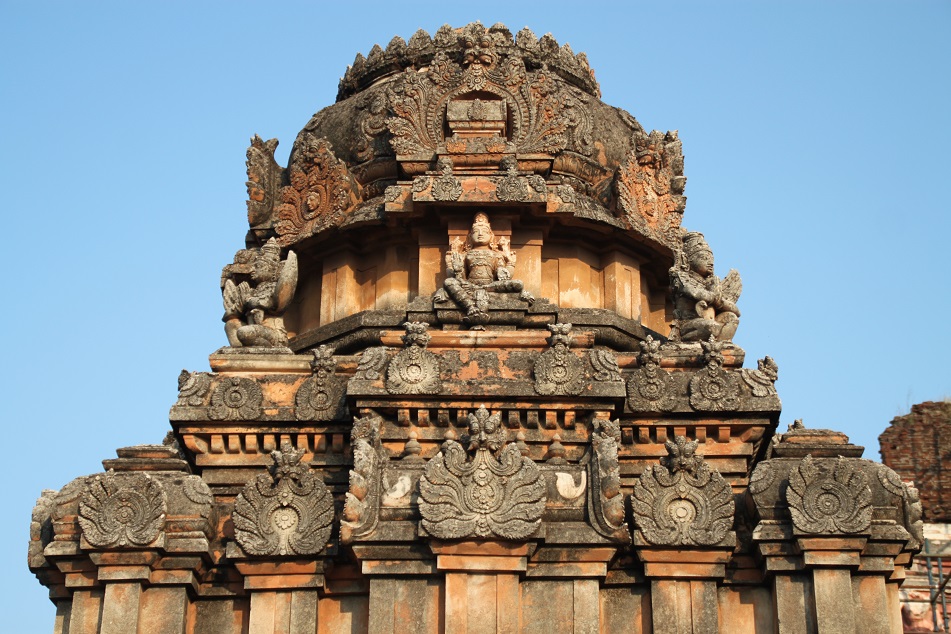
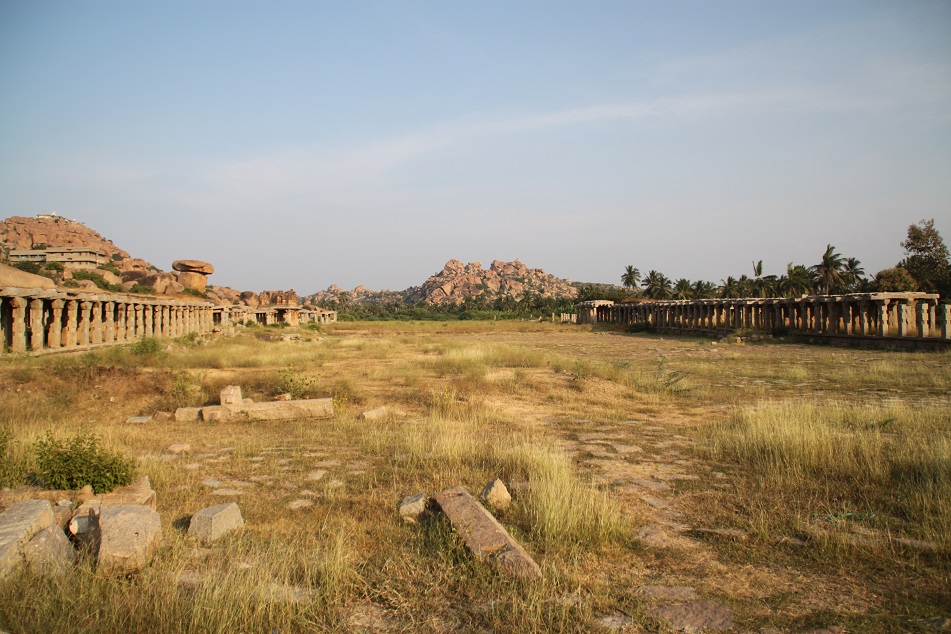

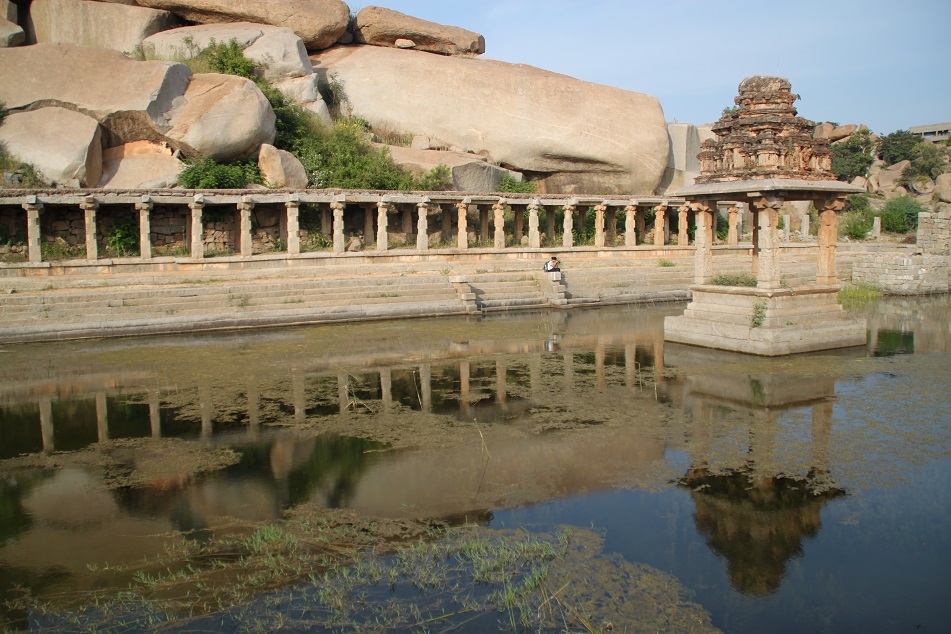

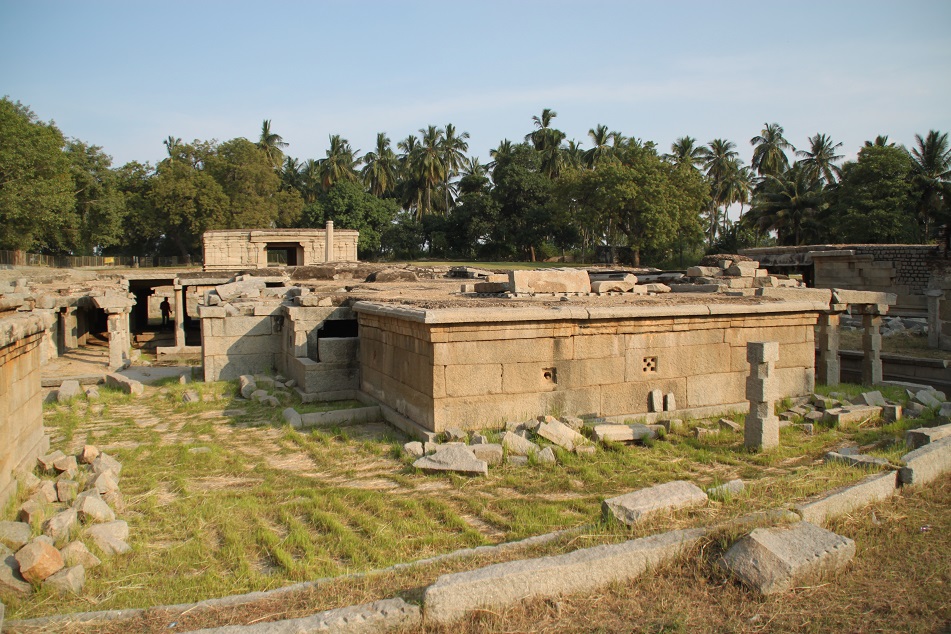
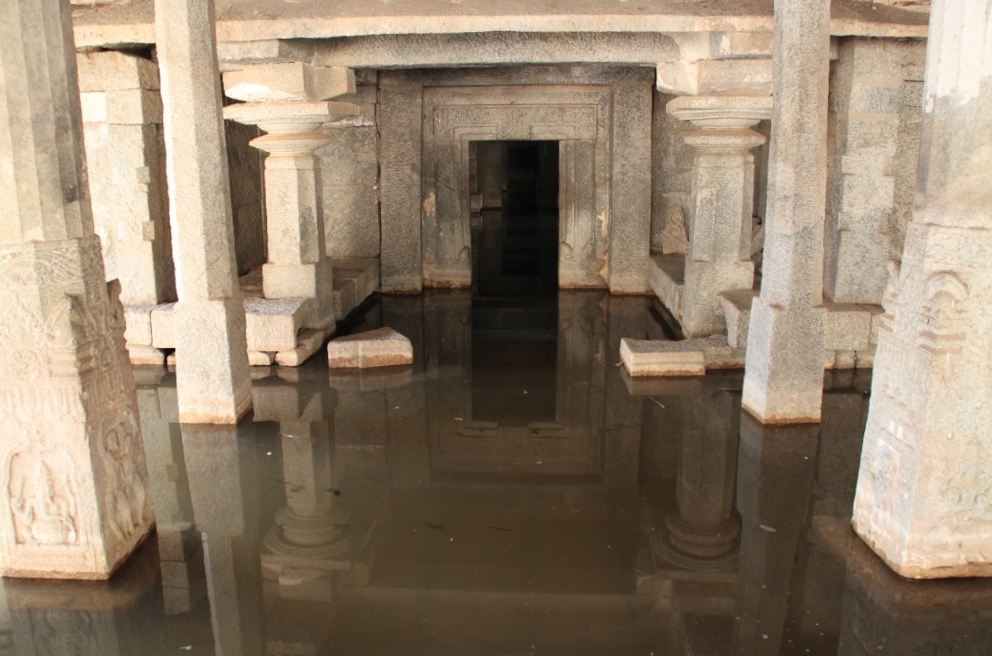
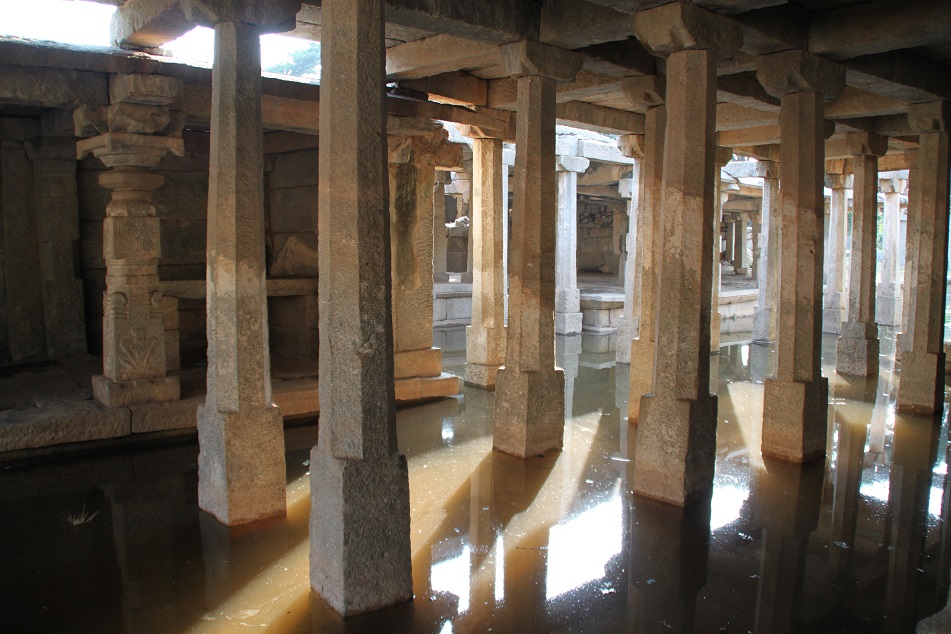
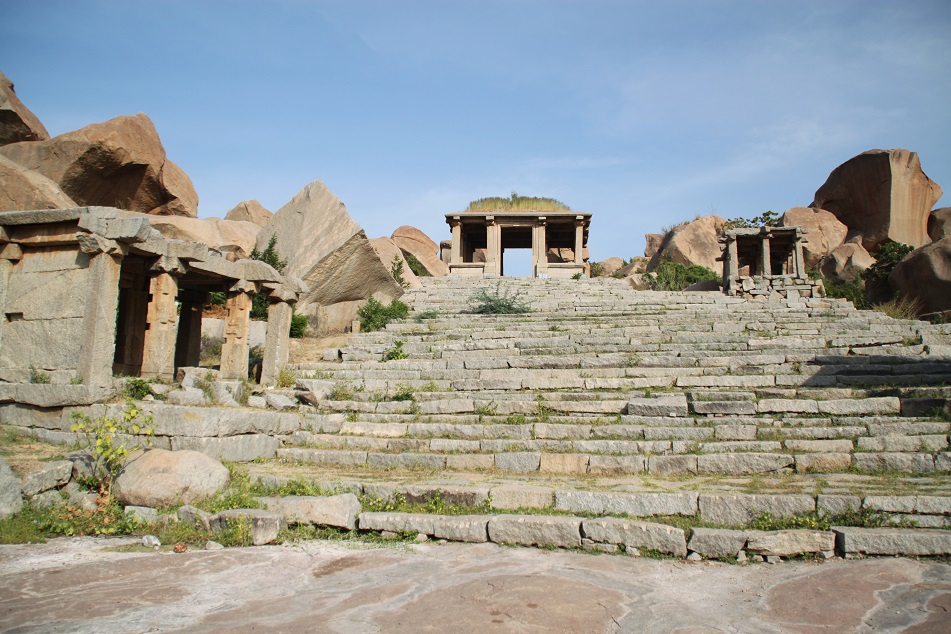
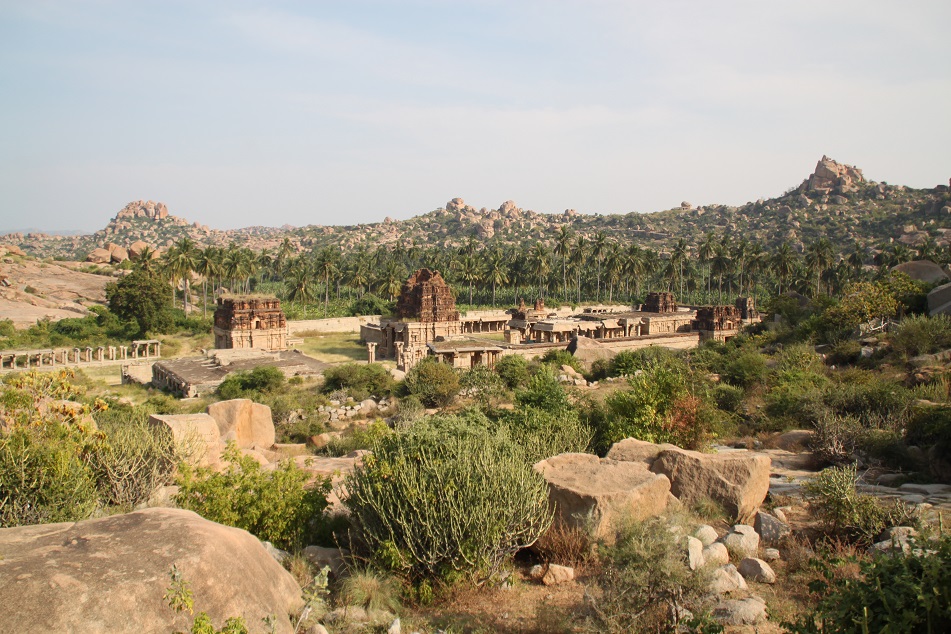
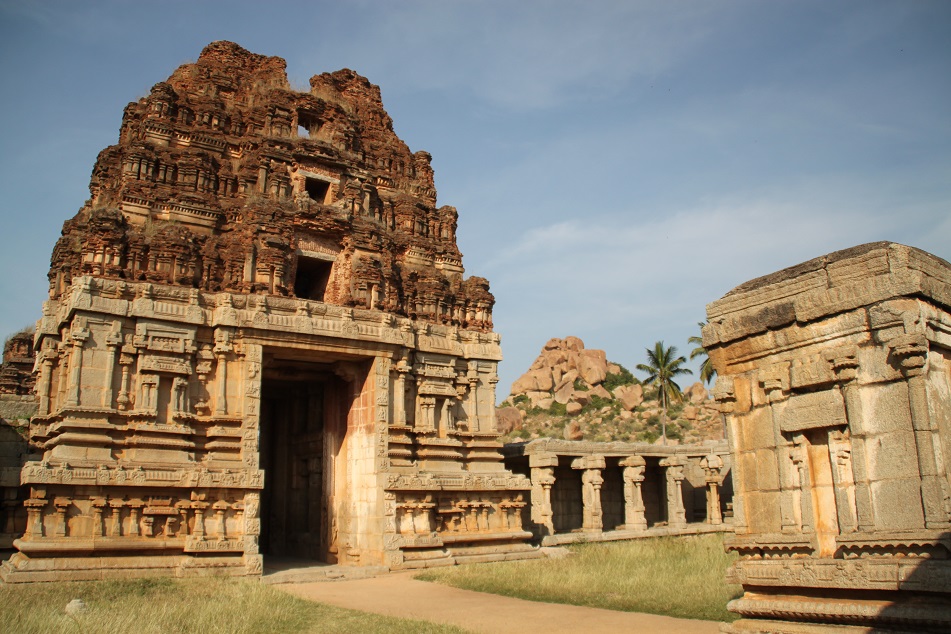
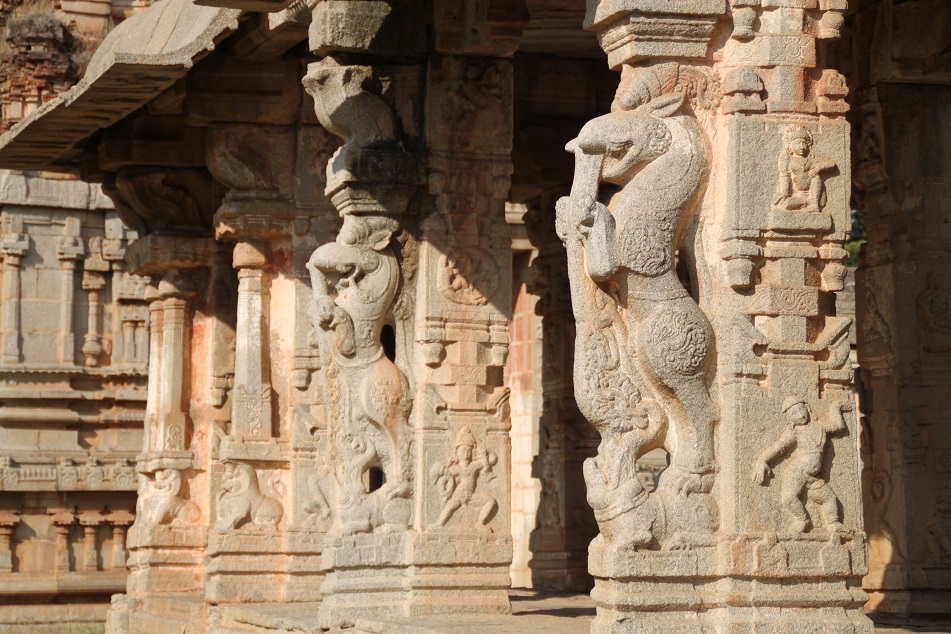
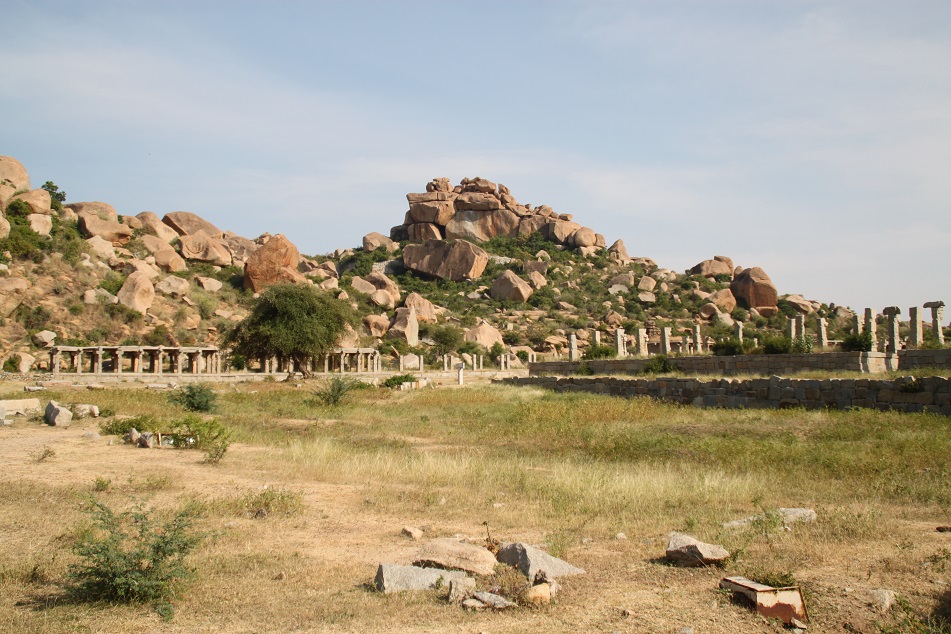
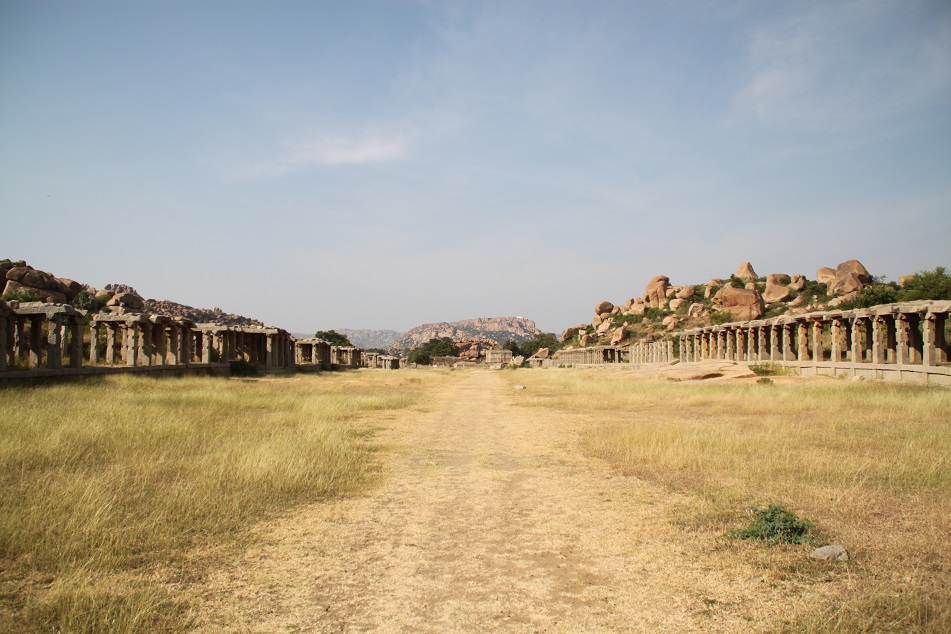
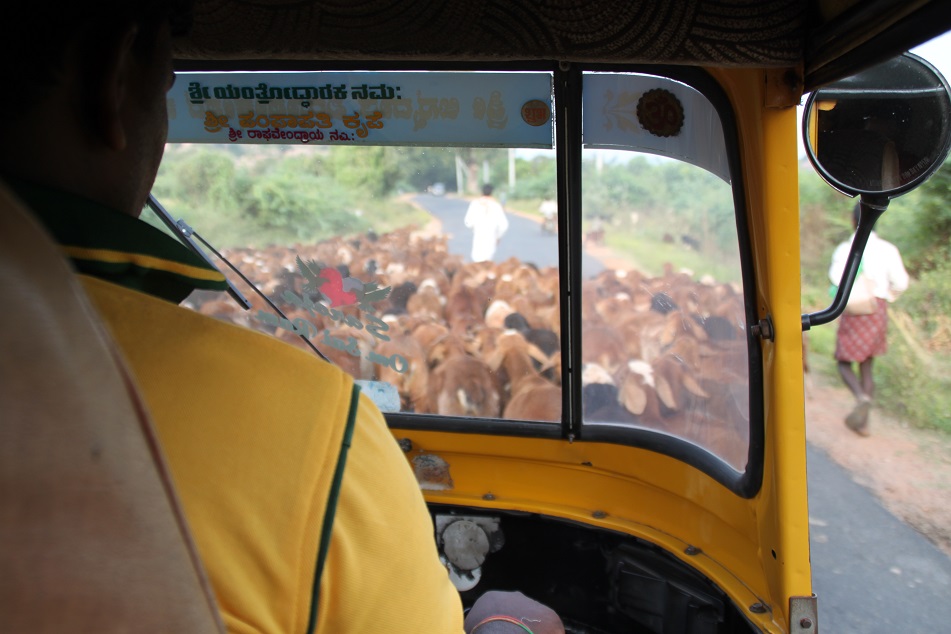
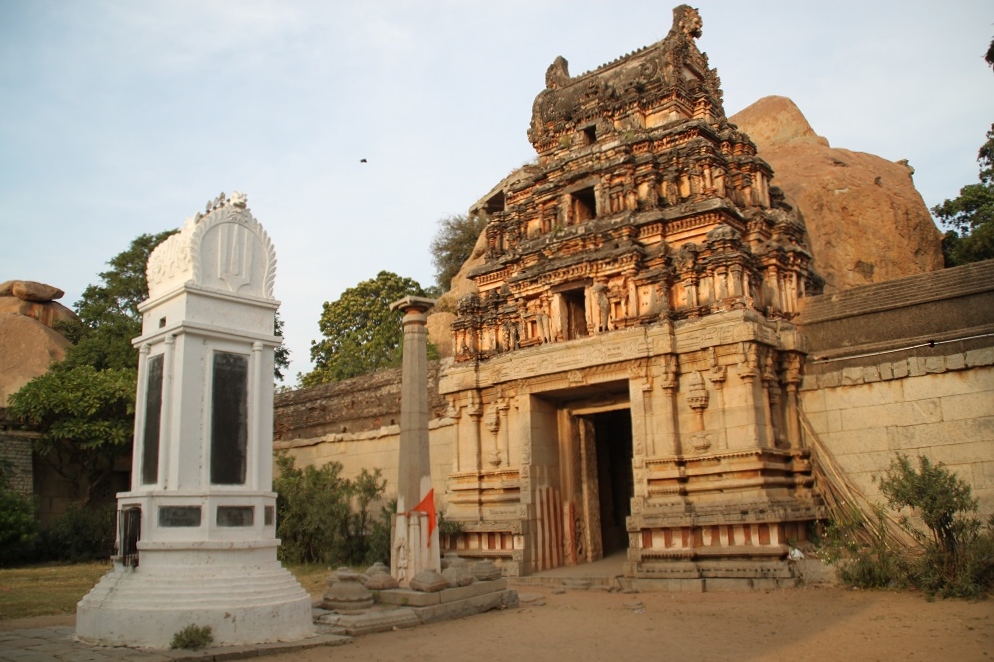
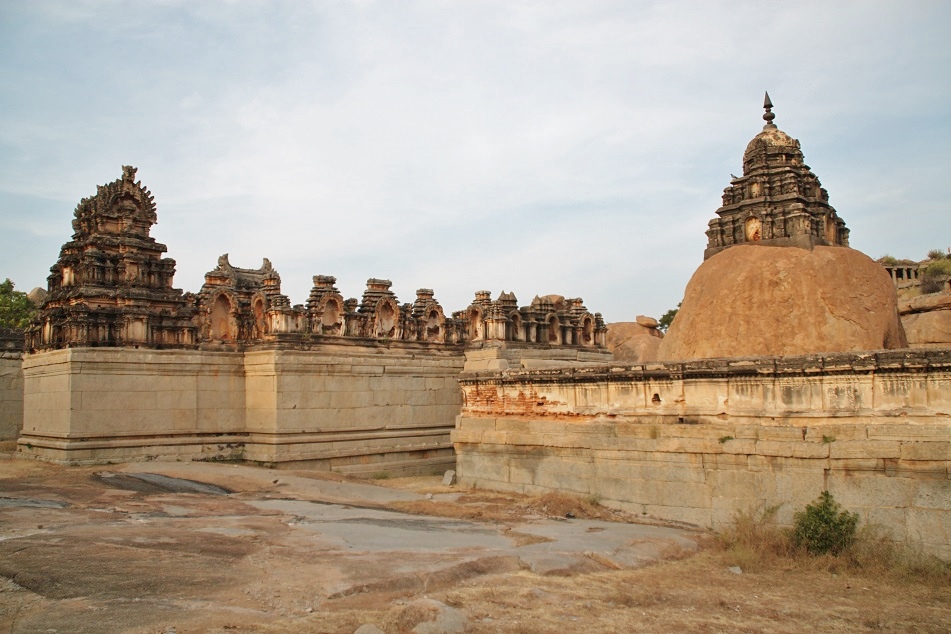
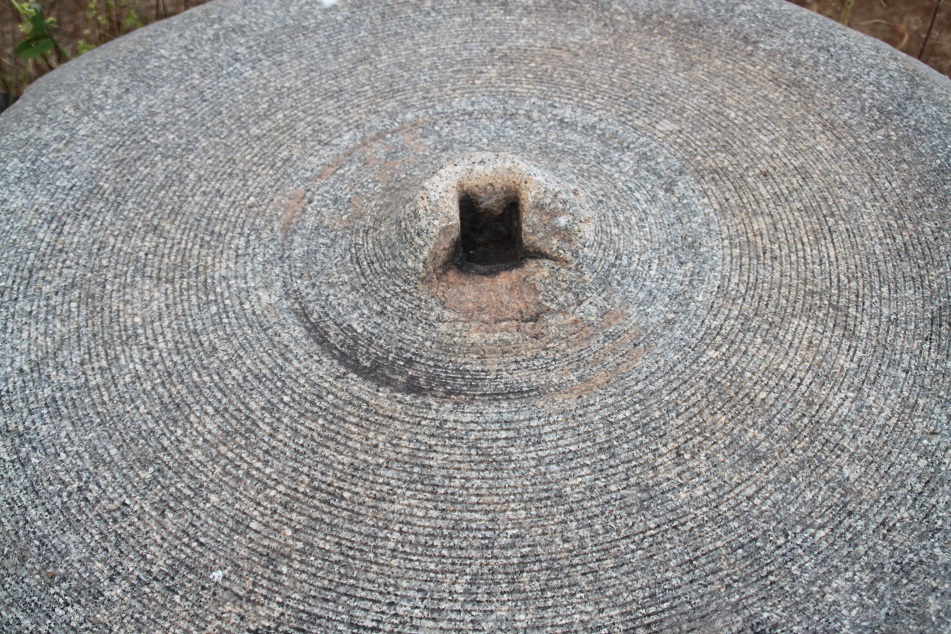
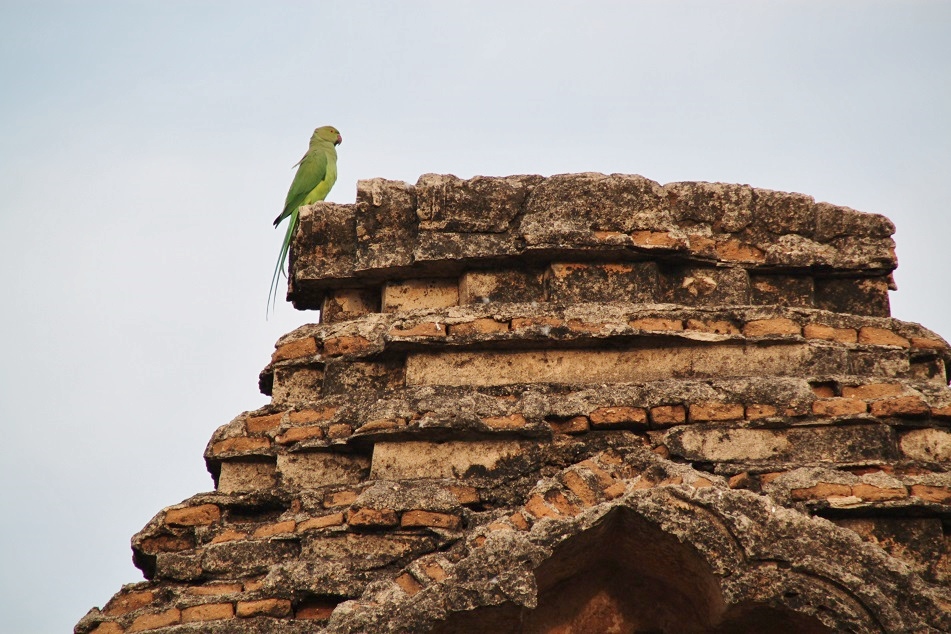
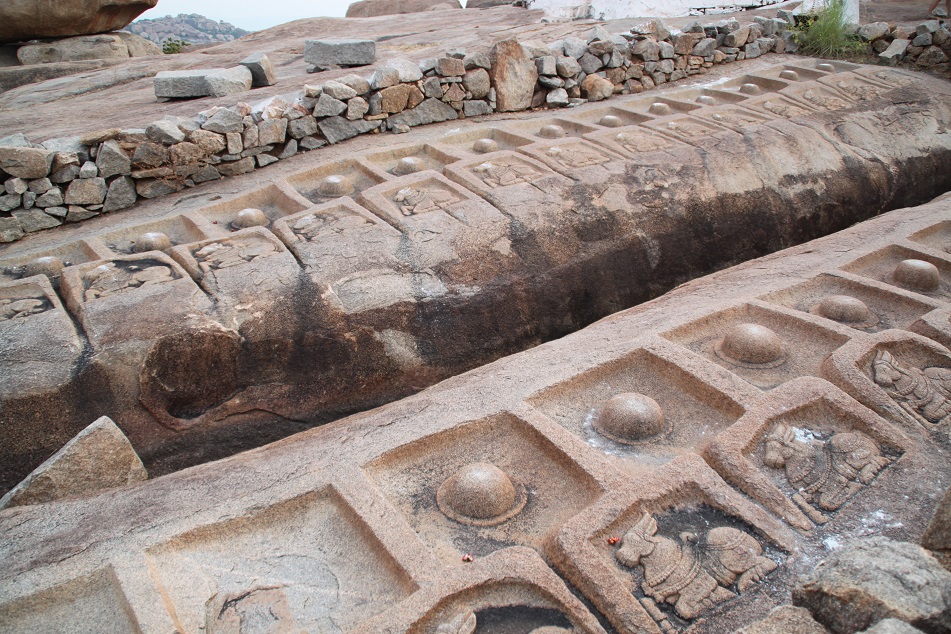

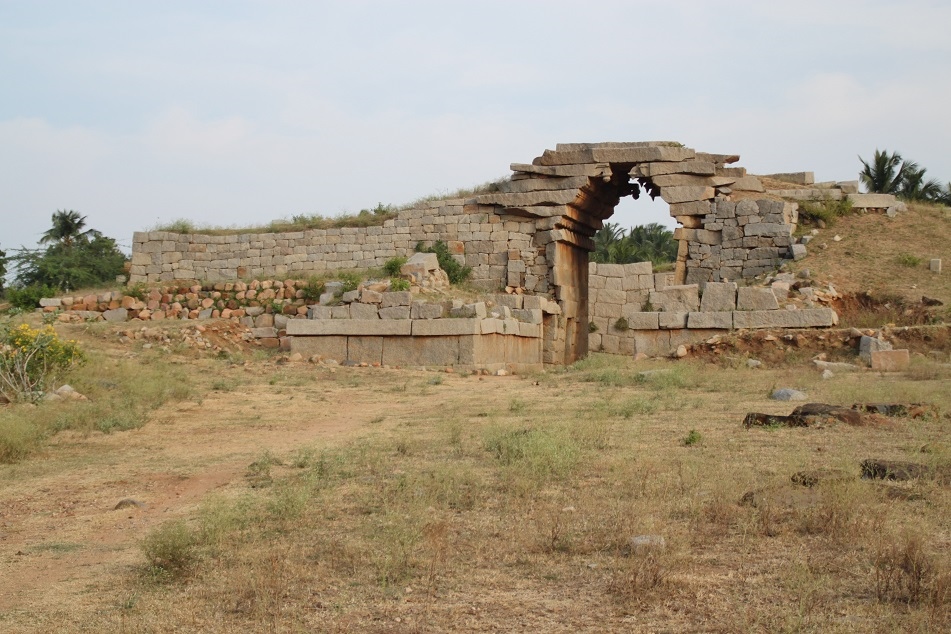
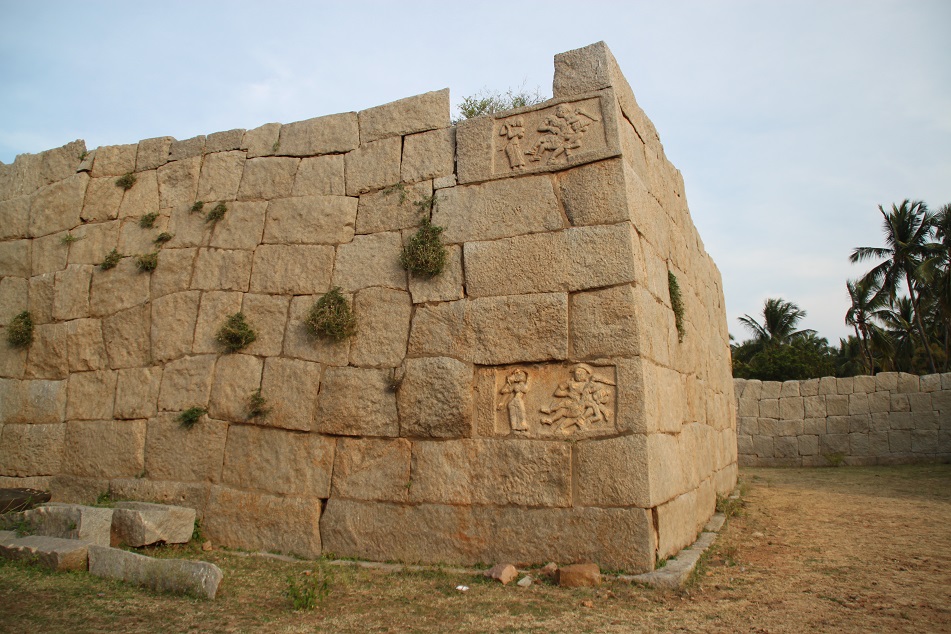
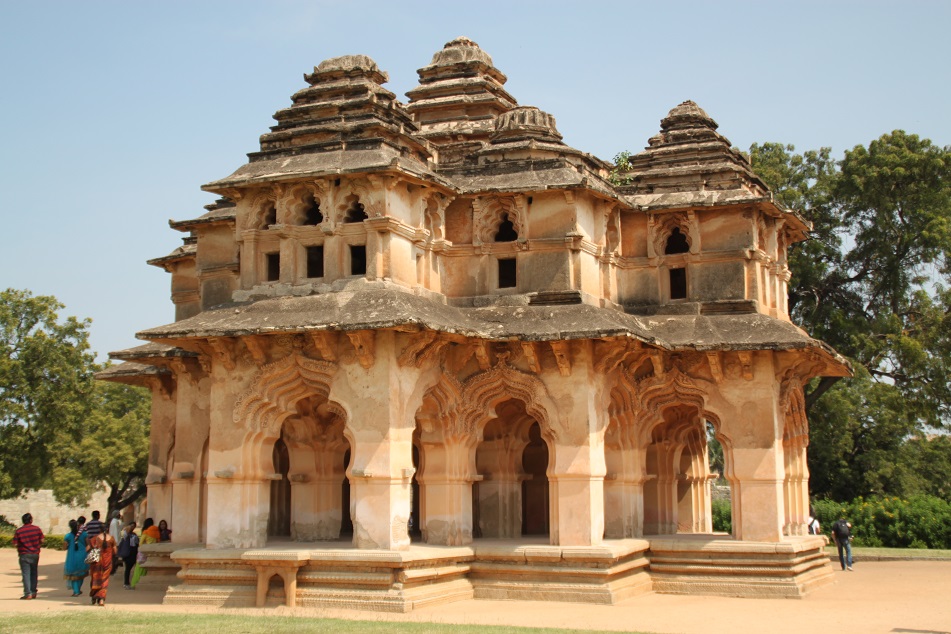

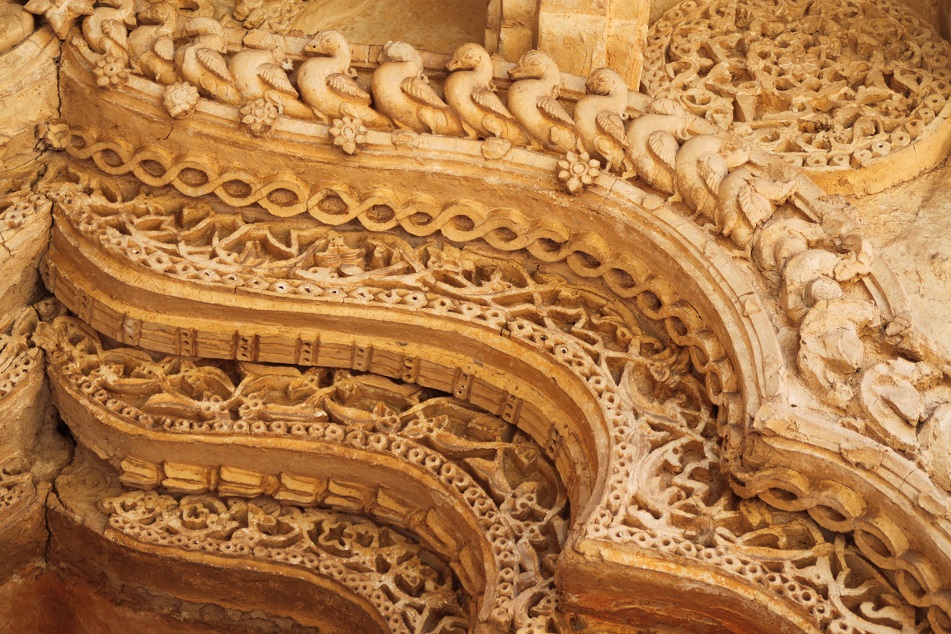

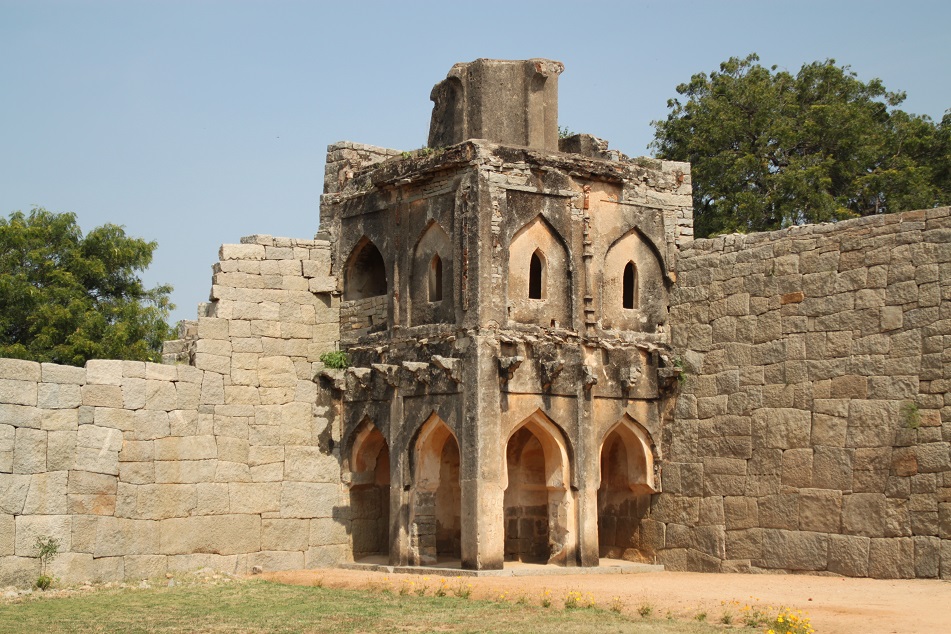
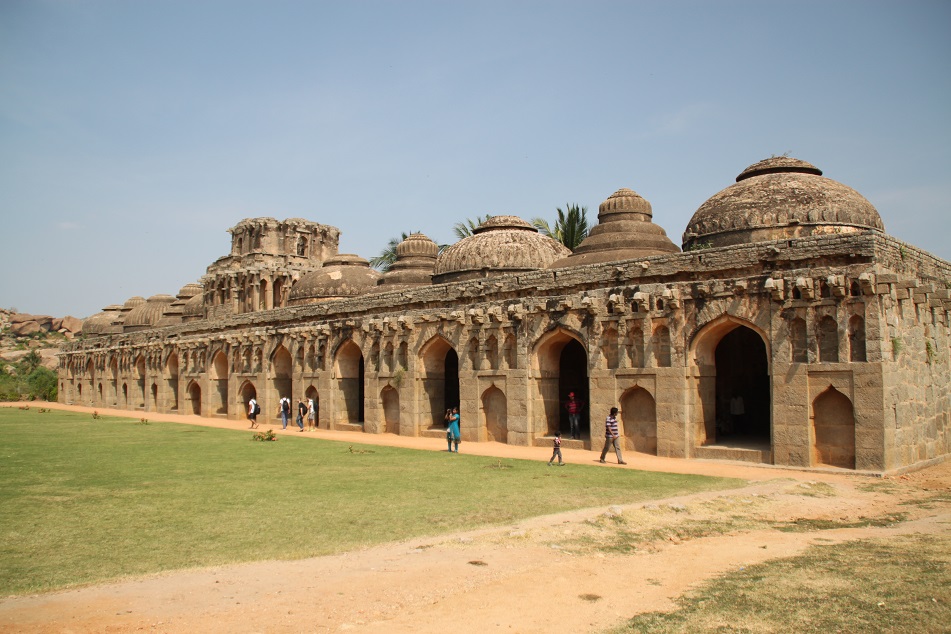

Incredible photos! Lovely
LikeLiked by 1 person
Thank you, Nicole!
LikeLiked by 1 person
Aduh hebat sekali ya empire-nya. Sampai sekarang saja masih terlihat betapa luas dan keren wilayahnya, apalagi dulu ya ketika masa keemasannya. Dan singgasana itu memang ‘hot-seat’ banget ya… sampai sekarang dimana-mana tetap berlaku hehehe…
Btw, duh nama raja2nya sangat Krishna ya, Setelah Krishna ya Achyuta (nama lain Krishna)…
Btw lagi, itu traffic jam krn pohon? Dan hihihi sempet2nya ngambil burung cantik… selalu gitu ya.. dlm perjalanan ada aja yg menarik oerhatian selain fokus perjalanan itu sendiri…
Terus… duh banyak…, dalem ga air yg nutupin temple itu.. sayang banget ya…
LikeLiked by 1 person
Dulu pastinya lebih megah lagi mbak, sampai pengelana dari Eropa yang pernah ke Roma pun membandingkan Vijayanagara dengan kekaisaran Romawi. Singgasana akan selalu jadi hot seat selama manusia masih suka dengan kekuasaan mbak, hehe. Tinggal caranya aja yang diatur, misalnya dengan demokrasi, supaya yang duduk di singgasana gak bisa semena-mena. Nah betul banget, raja-raja Vijayanagara pada zaman akhir-akhir memang banyak yang Waisnawa, beda dengan raja-raja awal yang lebih ke arah Saiwa.
Itu traffic jam karena kambing-kambing lagi nyebrang mbak, hehe.. Keliatan gak dari kaca depan trishaw-nya? Burung parkit itu seingat saya cukup banyak di India (juga di Sri Lanka) dan mereka terbang bebas aja gitu, gak kayak di sini yang pasti udah ditangkap dan dijual di pasar burung. 😦
Underground temple itu setau saya kadang bagian dalamnya tergenang air, kadang enggak. Pas saya ke sana pas banget lagi tergenang air, jadi gak bisa masuk deh. Sayang sih memang, karena lama-lama kan bisa merusak struktur candinya itu sendiri.
LikeLiked by 1 person
Kambing2nya ga keliatan… aku liatnya kayak pohon yang tumbang lagi ditarik orang… mataku lamur kali Bama… hahaha…
Jd kalo masuk ke underground temple itu aslinya pake tangga turun gitu? (*ini pertanyaan gebleg banget deh hahaha) aku ngebayangin pas bikinnya. Kalo disini kan ada yg dibawah tanah krn ketutup abu/banjir/pendangkalan sungai dll. Apa yg di Vijayanagara juga gitu?
LikeLike
Hehehe, iya itu banyak banget kambing mbak di jalan. 😀
Aslinya memang candinya dibangun beberapa meter di bawah permukaan tanah, tapi sampai sekarang belum diketahui pasti alasannya. Nah setelah ditelantarkan, candi ini lama-lama ketimbun tanah juga dan baru ditemukan lagi pas tahun 1980-an. Ketutup tanahnya sih kayaknya bukan karena bencana alam sih mbak, soalnya di Hampi ini bukan daerah rawan gempa, gunung berapi pun gak ada. Jadi kemungkinan memang karena terlantar dan udah gak dipake aja.
LikeLiked by 1 person
Astagaaaa… aku baru liat kambing2nya… ya ampuuuun banyak banget…
LikeLike
Tapi kena macet gara2 kambing bawaannya pengen ketawa sih. Beda sama kena macet gara2 banyak mobil. 😀
LikeLiked by 1 person
Reruntuhan Vijayanagara ini di Hampi – Karnataka kah Bam?
LikeLike
Iya Bart. Tiga postinganku terakhir mengenai Hampi semua yang tidak lain tidak bukan adalah bekas ibukota Vijayanagara.
LikeLiked by 1 person
That first glimpse of Achyutaraya Temple from Matanga Hill was spellbinding – I’m so glad Pampa took us there on foot via the monumental stairway. In a way I couldn’t believe we virtually had the ruins to ourselves. And Achyutaraya Bazaar must have been a hive of activity in its heyday. Thanks for this post, Bama – it was a wonderful way to wrap up your three-part series on Hampi.
LikeLike
At one point I actually did wonder where Pampa was taking us after we visited Rama temple — at that time I was more interested in that stairway which would have fit perfectly in Greece. Then as we arrived at Achyutarayapete I was so glad that he made the decision to take us there. The ancient bazaar, the temple, all surrounded by those inspiring hills… it was indeed a sight to behold. I’m so glad we had Pampa as our auto rickshaw driver. He was kind, patient, reliable, and quite knowledgeable. Thanks for reading, James.
LikeLike
Love the pillars, arches, animal life, and history!
LikeLike
It’s hard not to love and be impressed by them, Lex. I haven’t been to the northern part of India, but I believe Hampi is one of the most impressive ancient sites in the country.
LikeLiked by 1 person
What beautiful photos!
Quite the history buff too. Imoressive!
Peta
LikeLike
Much appreciated, Peta. For such a powerful empire Vijayanagara is curiously not really well-known to people outside India, including myself until I read an article about it on a magazine a few years back.
LikeLike
Sisa2 kejayaan nya aja begitu dahsyat megah dan keren, pasti dulu nya amazing banget
LikeLike
Hi kak Cumi. Iya dulunya pasti megah banget, sekarang aja sisa-sisa peninggalannya masih bikin berdecak kagum gitu.
LikeLike
so nice Kak Bama. Wow amazing temple with great building and very strong too. I can’t imagine that building in the past 🙂
LikeLike
Thank you. Based on past explorers’ accounts Hampi must have been a very impressive capital in the heyday of the empire.
LikeLike
Amazing photos, great blog also! Best.
LikeLike
Thank you for dropping by and leaving such a kind comment, Erick.
LikeLike
Wow! These photos are incredible, theres so much history behind these temples that we can learn from. Love your blog! Check out my page if you get the chance and feel free to interact with me 🙂
LikeLike
Thank you, Kathryn. I’m so glad that this post gave you a glimpse of the history and heritage of this part of India.
LikeLiked by 1 person
Thanks for another sumptuously detailed post Bama. The architectural details are spectacular! The arches seem Islamic, almost. Love your shot of the elephant stables. Wonder how many they held at any given time.
LikeLike
Visiting Hampi was like a dream come true, Madhu. The amount of Dravidian and Indo-Saracenic structures scattered throughout the village is astounding, even long after they were abandoned and plundered. I believe there must have been dozens of elephants fitted into that unusually ornate stable. Thanks for reading, Madhu.
LikeLike
thanks for sharing the details in the form of both text and photos
LikeLike
You’re welcome, Sree. And thanks for reading.
LikeLiked by 1 person
You are amazing,
but I am sure you already know that..
Alex Moses
https://alifeanswer.com/
LikeLike
Alex, you really are too kind. Thank you for dropping by.
LikeLiked by 1 person
Bama the photo of the light shining through the pillars is stunning. You have a wonderful eye for the beauty waiting to be captured.
LikeLike
Luck plays a big part in taking good photos of architectures around the world, and I was lucky to have such a sunny day when I was visiting those temples in Hampi. But thanks! I really appreciate your encouragement, Sue, as always.
LikeLiked by 1 person
oh amazing!
LikeLike
It really is! Thanks for dropping by.
LikeLiked by 1 person
wooooowww…..KEREN, ASLI !!!
LikeLike
Hampi ini salah satu dari sekian banyak tempat menarik di India (setidaknya menarik bagi pecinta candi-candi) yang kurang dikenal di Indonesia. Kalau suatu saat ke India disempatkan untuk ke Hampi mas, dijamin gak nyesel. 🙂
LikeLike
Pingback: Goa and Catholicism in India | What an Amazing World!
The photos are so inspiring! 😀
LikeLike
Much appreciated, Krešo!
LikeLiked by 1 person